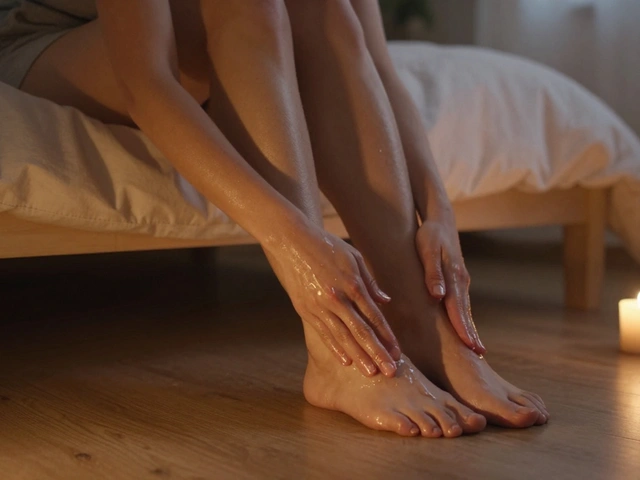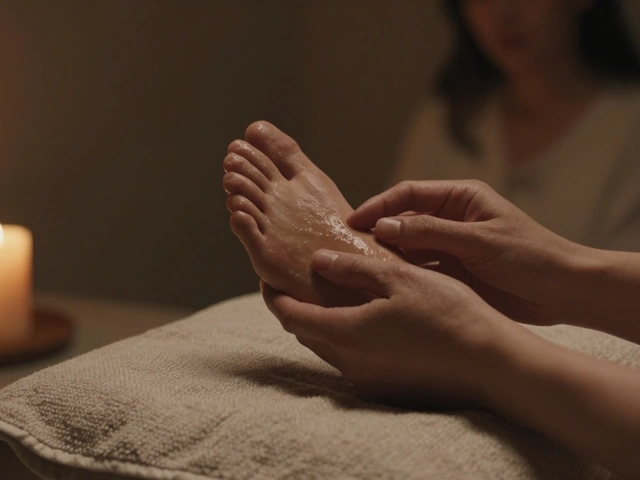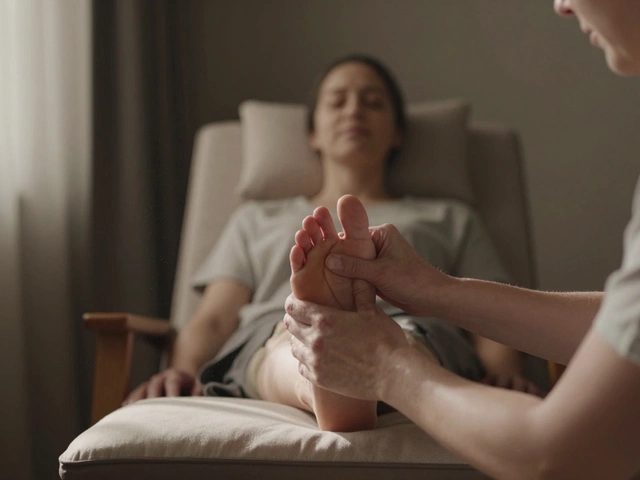Have you ever wondered about those persistent knots in your muscles that never seem to go away? These are often referred to as trigger points, and they can be a constant source of discomfort.
Trigger point massage is a specialized technique that focuses on releasing these tight areas in your muscles, potentially revolutionizing how you feel both physically and mentally.
By understanding what trigger points are, the benefits of targeting them, and how to effectively incorporate trigger point massage into your self-care routine, you can significantly improve your quality of life.
- Understanding Trigger Points
- Health Benefits of Trigger Point Massage
- Techniques and Tools
- Integrating Trigger Point Massage into Your Routine
Understanding Trigger Points
Many of us have felt the discomfort of tight, painful spots in our muscles. These are commonly known as trigger points. Trigger points are hypersensitive areas within the muscle tissue that can cause pain and discomfort not just in the muscle but even in other parts of the body.
The theory behind trigger points originated with Dr. Janet Travell, who first identified these dense nodules as sources of specific types of muscle pain. She discovered that they could not only cause local pain but also referred pain, which is pain experienced in different areas from where the trigger point is located. This makes understanding and treating trigger points crucial for comprehensive pain relief.
Trigger points can form when muscle fibers become overstimulated and fail to relax. This overstimulation can result from various factors such as repetitive use, poor posture, or acute injuries. Over time, these tight knots reduce blood flow to the area, leading to discomfort and even chronic pain.
A fascinating element about trigger points is their capacity to affect people differently. Some might only feel a slight discomfort, while others might experience debilitating pain. This variability often leads individuals to overlook trigger points as the root cause of their discomfort.
Trigger point massage aims to identify these specific areas and apply targeted pressure to release the muscle fibers. A study published in the Journal of Bodywork and Movement Therapies found that targeted trigger point therapy can significantly reduce both local and referred pain, especially in chronic cases.
Dr. Janet Travell once said, “The failure to recognize myofascial pain due to trigger points will perpetuate suffering that is easily alleviated.” Her pioneering work in this field has revolutionized how we approach muscle pain.
But how do you identify a trigger point? They are usually tender to touch and might feel like small pea-sized nodules. Pressing on these points can cause pain to radiate to other areas, confirming their connection to referred pain. Learning to recognize these signs is the first step toward effective relief.
Although it might sound simple to press and massage these points yourself, it's often beneficial to seek guidance from trained professionals initially. They can help you understand how much pressure is needed and give you the skills to manage your trigger points at home safely. Understanding your body and its responses to pressure can make all the difference in your health journey.
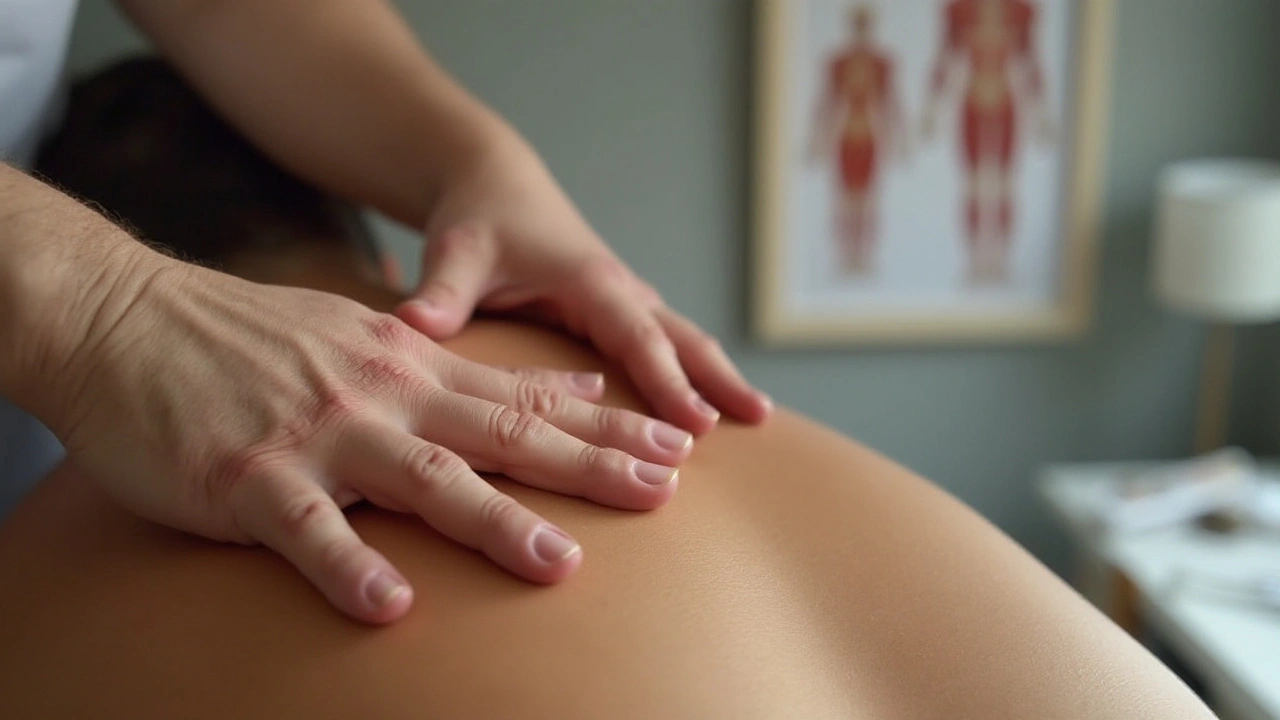
Health Benefits of Trigger Point Massage
Trigger point massage offers a myriad of health benefits that go beyond mere relaxation. By targeting specific knots within the muscle fibers, this technique can significantly relieve chronic pain. For many, it's a game-changer.
One major benefit is pain relief. By addressing these tight spots, the massage helps to release built-up tension and reduce pain. This is especially effective for individuals who suffer from conditions like fibromyalgia, tension headaches, and myofascial pain syndrome. Pain management becomes much more feasible when trigger points are regularly treated.
Another advantage is improved mobility. When muscles are tight, movement becomes restricted. By loosening these knots, you allow for greater flexibility and range of motion. Athletes, for instance, often find that trigger point massage helps to enhance performance and prevent injuries. Regular sessions can make a noticeable difference in your day-to-day activities as well.
Trigger point massage can also have a positive impact on mental health. The relief from constant pain can lead to reduced stress and anxiety. Many people report feeling a significant mood lift after their massage sessions. This can contribute to better mental well-being and a more positive outlook on life.
Moreover, circulation can be improved. Enhanced blood flow means that muscles receive more oxygen and nutrients, promoting quicker recovery. This is particularly beneficial for those recovering from sports injuries or surgical procedures. Faster recovery times make it easier to get back to your normal routine.
Another often overlooked benefit is better sleep. Many people who struggle with sleep disorders find that decreased muscle tension leads to more restful nights. Quality sleep is essential for overall health, affecting everything from cognitive function to immune system performance.
According to a study published in the Journal of Musculoskeletal Pain, patients who received trigger point therapy experienced a significant reduction in pain intensity and improved daily function.This evidence supports the widespread anecdotal claims about the effectiveness of this massage technique.
Finally, incorporating trigger point massage into your healthcare regimen can lead to a greater awareness of your body. You'll become more attuned to areas that need attention, making it easier to catch potential issues before they become significant problems. Being proactive about your health is always a good strategy.

Techniques and Tools
When it comes to trigger point massage, knowing the right techniques and tools can make a world of difference. This massage method usually involves applying direct pressure to the trigger points—the tight areas in your muscles—to alleviate pain, enhance circulation, and increase range of motion. One common technique involves using your fingers, knuckles, or elbows to apply sustained pressure to the muscle knot. It's important to start with gentle pressure and gradually increase it as your muscle starts to relax. Breathing deeply and steadily can help you manage any discomfort during the process.
Another popular method is the use of a tennis ball or a specialized massage ball. These are excellent tools for self-massage on areas like the back, glutes, and thighs. To use a massage ball, you would place it between your body and a wall or the floor, and then gently roll over the ball to target different trigger points. This can be particularly effective because the ball's firmness allows it to penetrate deeply into the muscle tissue, providing significant relief.
Foam rollers are another highly effective tool for trigger point massage. They are especially useful for larger muscle groups, such as the thighs, calves, and back. To use a foam roller, position it under the targeted muscle and use your body weight to roll back and forth slowly, pausing on any tight spots. This can help break up muscle adhesions and improve blood flow. According to Dr. Michael Fredericson, a professor at Stanford Medicine, foam rolling can be a valuable part of a comprehensive self-care routine—
"Regular foam rolling can significantly reduce muscle stiffness and soreness, improving both flexibility and performance over time."
For those looking for a more hands-off approach, electronic massage tools like percussive massage devices can be a game changer. These tools use rapid pulsations to deliver deep-tissue massage and can be customized with different attachments to target various muscle groups. While they can be a bit pricey, their effectiveness and convenience often justify the investment.
Self-Massage Tips
When performing trigger point massage at home, it's crucial to listen to your body and adjust your technique as needed. Here are some useful tips to keep in mind:
- Start slow and gradually increase pressure to avoid causing undue pain.
- Always ensure you're in a comfortable position to prevent strain on other parts of your body.
- Use a combination of pressure and movement to effectively release muscle knots.
- Incorporate stretching before and after your massage to enhance its benefits.
- Stay hydrated to help your muscles recover more quickly.
By incorporating these techniques and tools into your routine, you can benefit from the profound effects of trigger point massage. Not only will it help manage pain, but it can also contribute to a broader sense of well-being, making it a valuable addition to any self-care regimen.
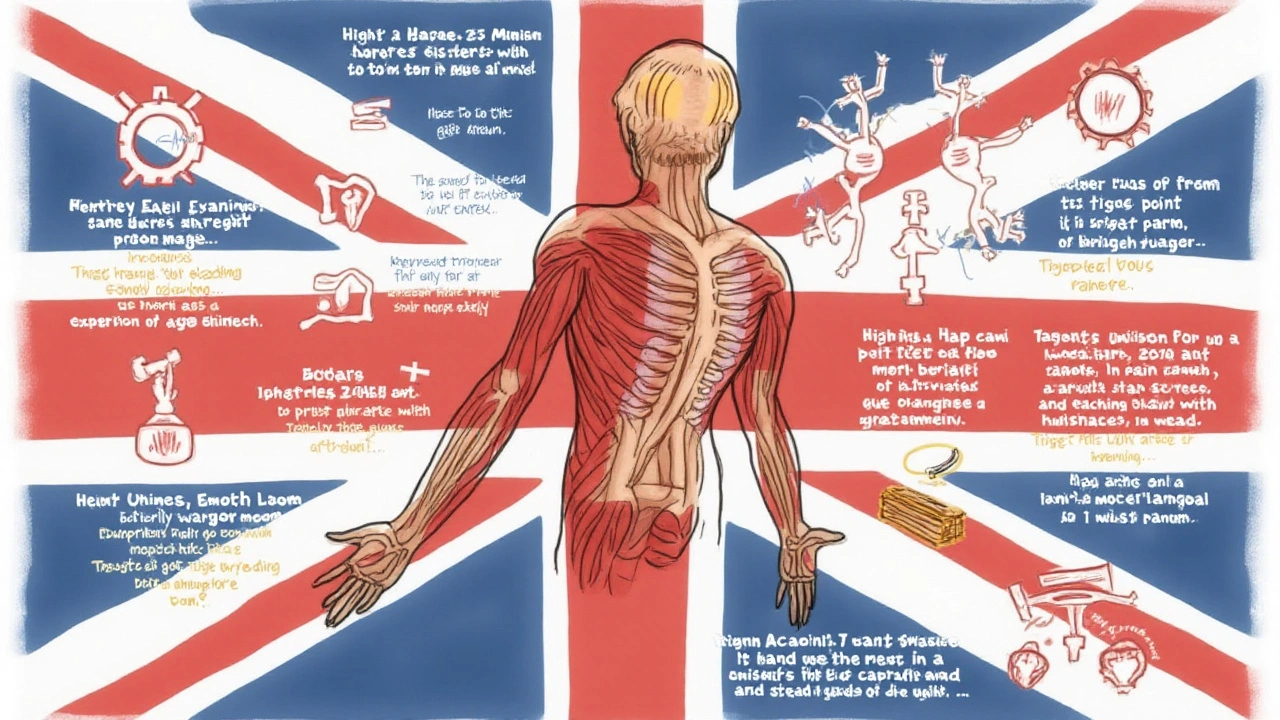
Integrating Trigger Point Massage into Your Routine
Addressing muscle pain and discomfort can seem like a daunting task, but integrating trigger point massage into your daily or weekly routine can be surprisingly manageable. The key is to make it a habit, just like brushing your teeth or taking vitamins. First, set aside a specific time each day for your massage practice. Morning or evening can work best because you are less likely to be interrupted. Consistency will help your body get used to this soothing ritual and enhance the benefits over time.
Another great way to make trigger point massage part of your life is to use simple tools that make the process easier. Foam rollers, massage balls, or even a dedicated massage chair can be excellent investments in your health. These tools are designed to help you reach hard-to-target muscles effectively. If you’re new to trigger point massage, start with a softer tool and gradually work your way up as you get more comfortable.
Knowing where to apply pressure is just as important as how frequently you perform the massage. Focus on areas that typically harbor trigger points such as your neck, shoulders, back, and legs. Use fingers, knuckles, or tools to apply steady, firm pressure to these areas, holding for about 30 seconds to one minute.
Exercise and stretching routines can complement your trigger point massage efforts. Combining these with your pain-relief strategy can provide more effective outcomes. Yoga poses, especially those targeting muscle tightness, work wonders when paired with trigger point massage.
It’s essential to listen to your body. If you feel significant pain while massaging, you might be pressing too hard. Aim for a balance between discomfort and relief. You should feel a release of tension after each session, not increased pain.
According to Dr. Janet Travell, a pioneer in the field of trigger point therapy, “We need to re-educate our muscles to avoid chronic tension.” This insight underscores the importance of regular and consistent massage treatments.
Incorporating professional help can be beneficial, too. A professional massage therapist trained in trigger point therapy can provide personalized guidance and more targeted pressure. Booking regular sessions with a professional can help you understand better techniques which you can then apply at home.
Mindfulness can play an essential role when you’re massaging your trigger points. Take deep breaths and relax your mind, allowing your body to benefit fully. This mindfulness approach can amplify the effectiveness of the massage, making each session more productive.
Keeping a massage journal might be a good idea. Jot down the areas where you experience the most relief, and keep track of any recurring pain spots. This can help you identify patterns and effectively target problem areas over time.
Lastly, hydration is crucial. Drinking plenty of water after a massage can help flush out toxins that are released from the muscles. Staying hydrated will aid in recovery and amplify the positive effects of the massage.






